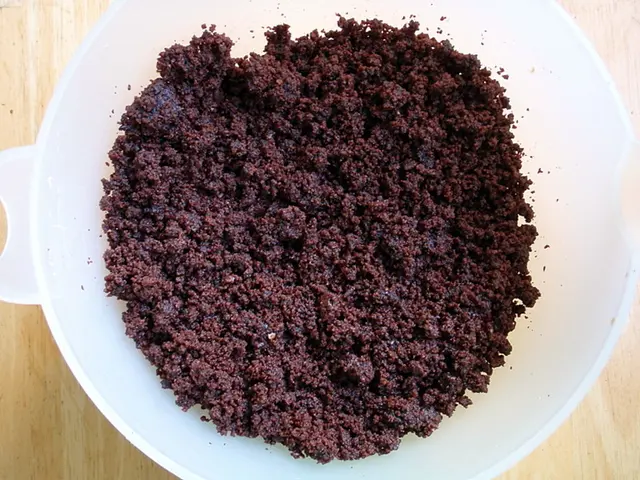Spotting Age Imperfections versus Cancerous Skin Changes: Identifying the Distinction
Here Comes the Sun: Age Spots vs Skin Cancer
Tackle those sun-kissed puzzles: age spots or skin cancer? Let's uncover the difference between these two skin conditions and identify the warning signs, diagnoses, and treatments.
Sunspots or Skincancer?
Age spots (also called sunspots or solar lentigines) and skin cancer may appear alike but don't let their deceptive similarity catch you off guard. Learn the tell-tale signs to distinguish one from the other, ensuring the correct course of action for your skin's well-being.
The Showdown
| Feature | Age Spots (Sunspots) | Skin Cancer ||---------------|---------------------------------------------|----------------------------------------------|| Appearance | Small, flat, brown to black, uniform color | Irregular shape, multiple colors, may be raised or ulcerated || Texture | Smooth and flat | Raised, scaly, crusty, may bleed or itch || Location | Sun-exposed areas: face, hands, shoulders | Sun-exposed areas mostly, but can occur anywhere || Changes Over Time | Usually stable, may slowly darken | Rapid changes in size, shape, color, or texture |
The Red-Alert Symptoms
Sunspots
- Flat, small to medium-sized spots.
- Color ranges from light brown to dark brown or black.
- Usually uniform in color, round or oval in shape.
- Borders are smooth and well-defined.
- Typically do not change quickly over time.
- Often increase in number or darken slowly with age and continued sun exposure.
Skin Cancer
- Melanoma: follows the ABCDE rule for warning signs: Asymmetry, Border irregularity, Color variation, Diameter increase, and Evolution (changes over time)
- Basal cell carcinoma and squamous cell carcinoma may have an irregular shape, uneven, scalloped, or poorly defined borders, color variations, and become raised, ulcerated, crusty, bleed, or become sore.
The Dermatologist's Verdict
To confirm whether the spotted area is a simple sunspot or a more sinister growth, a healthcare professional will perform a thorough skin examination. In case of doubt, a skin biopsy may be conducted to rule out skin cancer or other conditions.
The Treatment Plan
Sunspots do not require treatment because they are not harmful. However, some individuals may choose to rid themselves of these unsightly marks through creams, lotions, laser treatments, cryosurgery, microdermabrasion, or chemical peeling. Consult a dermatologist to discuss the available options and the most effective remedies.
Skin cancer treatment varies based on factors such as the type and stage of skin cancer and a person’s individual circumstances. Topical therapies, radiation therapy, chemotherapy, immunotherapy, or systemic medication may be prescribed. In some cases, skin cancer can be surgically removed.
Always Follow the Sun Safety Rules
Remember, prevention is better than cure. Protect your skin from harmful UV rays by covering up, seeking shade, wearing sunglasses, and applying broad-spectrum sunscreen. Keep an eye on your skin, and if you notice any changes, consult a healthcare professional immediately.
Stay sun-savvy, and let's defeat skin cancer together! ☀️🩺🔥
- In the field of dermatology, understanding the differences between age spots and skin cancer is crucial for identifying warning signs and appropriate treatments, especially among seniors as they are more susceptible to both health-and-wellness conditions like these.
- While age spots, or sunspots, generally appear flat, small, and uniformly colored, skin cancer may show irregular shapes, multiple colors, and raised or ulcerated textures, which are early warning signs that should prompt a visit to a medical professional.
- When it comes to Melanoma, dermatologists rely on the ABCDE rule: Asymmetry, Border irregularity, Color variation, Diameter increase, and Evolution (changes over time) to determine the presence of this type of skin cancer.
- In oncology, various types of skin cancer like basal cell carcinoma and squamous cell carcinoma might also exhibit strange shapes, uneven borders, color variations, and develop into raised, ulcerated, crusty, or bleeding tumors that require immediate medical attention.
- Ensuring skin health and wellness requires a combination of knowledge, preventative measures such as daily sunscreen use, and prompt medical intervention when skin-conditions like age spots or skin cancer arise. By staying vigilant and working closely with dermatologists, we can work towards early detection and treatment for skin-care.








